#eumeninae
Text
this mud dauber wasp (Sceliphron caementarium) seemed distressed about something in her clay nest. Turns out it had been commandeered by a keyhole wasp (Pachodynerus nasidens), who was now aggressively asserting ownership
keyhole wasps, which hunt weevils and other small beetles, will opportunistically nest in any sort of small cavity (such as a keyhole). The existing literature on this species doesn’t say anything about taking over other wasp‘s nests, only that they sometimes refurbish abandoned nests, but I guess this one didn’t get the memo.
This isn't the worst of their mischief though- they also have a habit of building nests that clog up the airspeed measuring instruments in planes and have caused several fatal crashes.
(Florida, 10/6/21)
#hymenoptera#wasps#mud dauber#keyhole wasp#eumeninae#vespidae#sceliphron caementarium#pachodynerus nasidens#bugs#bugblr#insects#biology#entomology
14K notes
·
View notes
Text
just for fun, a compilation of every wasp species I've seen drink from the pond so far.
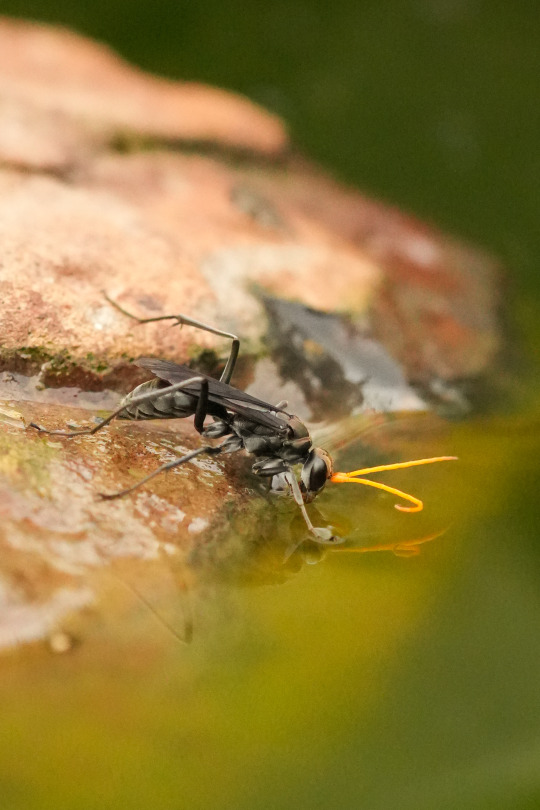
Spider Wasp, genus Fabriogenia.

Potter Wasp, subfamily Eumeninae.

Potter Wasp, genus Paralastor.

Square-headed Wasp, subfamily Crabroninae.

Vase-cell Mud-dauber Wasp, Sceliphron formosum.

Square-headed Wasp, genus Pison.

Australian Paper Wasp, Polistes humilis.
#ljsbugblog#bugblr#entomology#macro#insects#hymenoptera#aculeata#wasps#pompilidae#spider wasps#fabriogenia#vespidae#potter wasps#eumeninae#paralastor#crabronidae#crabroninae#square-headed wasps#pison#sphecidae#thread-waisted wasps#sceliphron#slender mud-dauber wasps#sceliphron formosum#vase-cell mud-dauber wasp#polistes#paper wasps#polistes humilis#australian paper wasp
1K notes
·
View notes
Text
I like to call Synoeca "vampire wasps" because of the conspicuous red mandibles and clypeus. While they don't actually drink blood, they pack a painful sting!
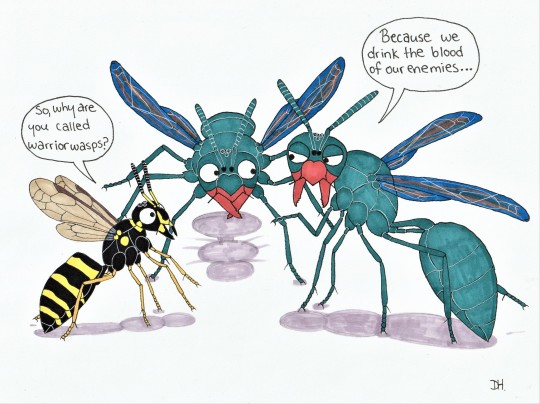
#hymenoptera#insect#wasp#wasps#entomology#apocrita#vespoidea#aculeata#cartoon#comic#Polistinae#Eumeninae#Synoeca#Ancistrocerus
67 notes
·
View notes
Text
#2091 - Paralastor sp. - Potter Wasp

One of the very numerous species in this genus of Australian Potter Wasps.
The Eumeninae (formerly their own family, in some sources) are by far the largest subfamily of the Vespidae, with almost 200 genera, and almost 3,000 species from a total of about 4,500. Most lay a single egg in a previously prepared cell (usually constructed from mud) and provision the cell with multiple paralysed beetle grubs, spiders, or caterpillars. Paralastor collect the latter. The adults are nectar feeders.
Mt. Ainsley, ACT
7 notes
·
View notes
Photo
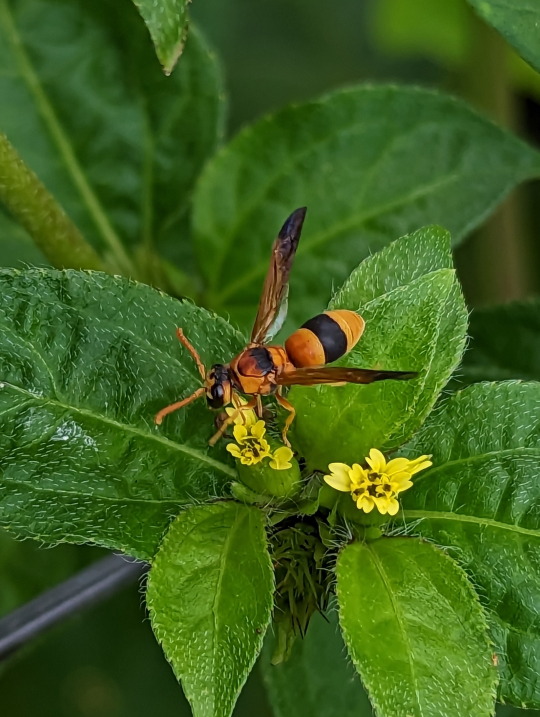

Wonderful Day in the Meadows
Unidentified, subfamily Eumeninae
23/02/23
#Eumeninae#Unidentified#Vespidae#Vespoidea#Vespoid Wasps#Aculeata#Apocrita#Hymenoptera#wasps#Arthropods#Arthropoda#invertblr#invertebrates#bugs#bug#bugblr#bugs tw#insectblr#entomology#insecta#insect#insects tw#insects
44 notes
·
View notes
Text
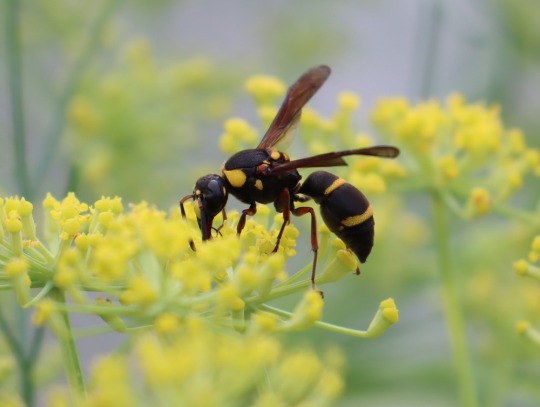

フェンネルにオオフタオビドロバチが来ていた(6月24日)
#Anterhynchium flavomarginatum#Eumeninae#potter wasp#mason wasp#insects#owady#japan#fennel#Foeniculum vulgare#koper włoski#Fenkuł włoski#flowers#kwiaty
3 notes
·
View notes
Text

A potter wasp (species Euodynerus megaera) that was in my room- I got it out safely :]
#Potter wasp#Eumeninae#Vespidae#Wasps#Wasp#Hymenoptera#Insects#Insect#Bugs#Bug#arthropods#Photos#Photo#Wasp House Sights
7 notes
·
View notes
Note



Hi!! Wondering what kind of bug this is,, looks like a wasp but idk what species or kind :o
these are mason or potter wasps (Eumeninae) but you’ve got two species there: pic 1,3 is Monobia quadridens without the elongated petiole “waist” and pic 2 is probably Eumenes fraternus (I forget if there’s any similar ones).
48 notes
·
View notes
Photo
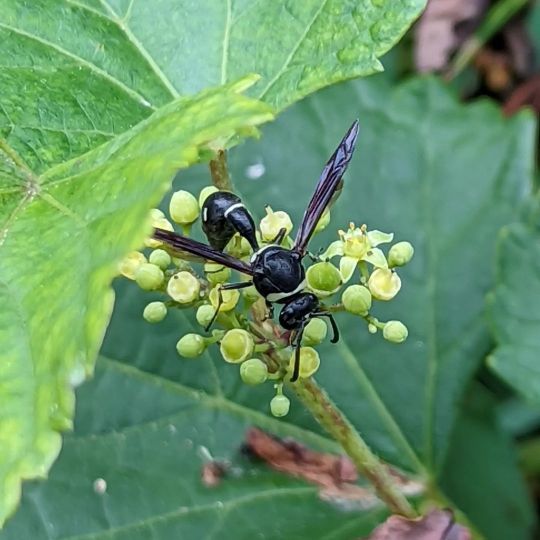
Eumenes fraternus is a species of potter wasp in the subfamily Eumeninae of the family Vespidae. It is native to the eastern United States and Canada. The female builds a miniature pot out of mud in which it lays an egg and places a live caterpillar. Its developing larva feeds on this whereas the adult wasp feeds primarily on nectar. (at Arlington, Virginia) https://www.instagram.com/p/CjDG1qkOl0akqOnJzEM2sCQtLEkJDIGFwToSmY0/?igshid=NGJjMDIxMWI=
0 notes
Photo
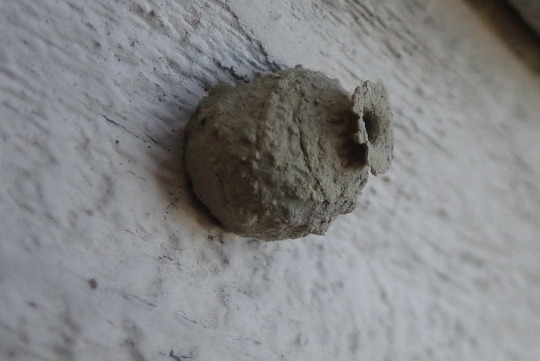
20/6/20 The Blue Haired Girlfriend found a tiny (1 cm) clay amphora on the side of the house next to one of the garlic beds - we’ve got a pottery wasp!
Undoubtedly it contains Just Regular Amphora Things: olive oil, wine, fermented beetle larva sauce.
#daily#wasp#eumeninae#theory: hyrule is infested by REALLY BIG pottery wasps#link is doing everyone a service smashing all those amphora
356 notes
·
View notes
Photo
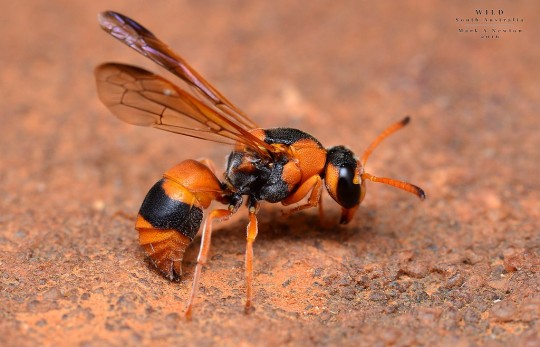
Potter wasp (Epiodynerus nigrocinctus)
Photo by Mark Newton
#potter wasp#wasp#epiodynerus nigrocinctus#epiodynerus#eumeninae#vespidae#vespoidea#aculeata#apocrita#unicalcarida#hymenoptera#hymenopterida#endopterygota#neoptera#pterygota#insecta#hexapoda#pancrustacea#arthropoda#panarthropoda#ecdysozoa
75 notes
·
View notes
Text

my favourite visitor to the pond is this beautiful Australian Hornet (Abispa ephippium). she regularly comes to the pond to drink, and luckily isnt too camera-shy!

despite being called a hornet, A. ephippium is actually a species of potter wasp. as such, she is a solitary creature who spends her time building mud-nests to house her larvae, and hunting caterpillars with which to feed them. as an adult, she is a pollinator who feeds on flower nectar.
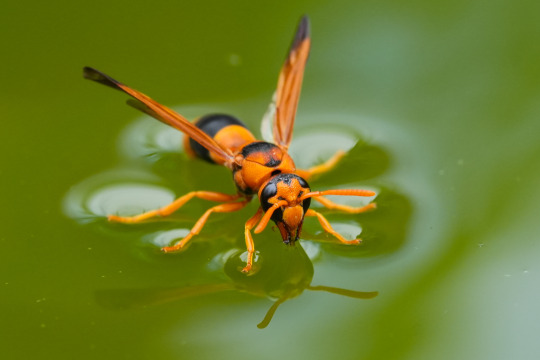
she is about 30mm (1.2in) in length, but deft enough to carefully land on top of the water without breaking the surface tension (so far she is the biggest insect I've seen thats able to do this). its an amazing behaviour from both an entomologic and photographic perspective, these photos are some of my favourites <3
Australian Hornet, female (Abispa ephippium).
#ljsbugblog#bugblr#entomology#insects#hymenoptera#vespidae#wasps#eumeninae#potter wasps#mason wasps#abispa#large australasian mason wasps#abispa ephippium#australian hornet#macro
2K notes
·
View notes
Photo
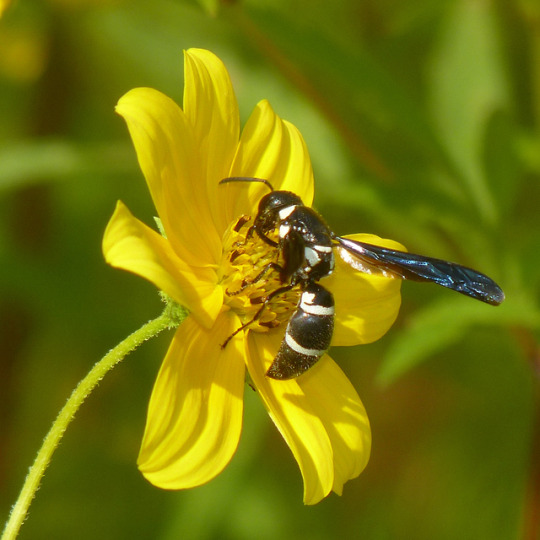
Pseudodynerus quadrisectus on tickseed (by me)
#Pseudodynerus quadrisectus#Pseudodynerus#Eumeninae#Vespidae#Vespoidea#Aculeata#Apocrita#Hymenoptera#Insecta#Hexapoda#Arthropoda#insects#wasp#flowers#summer#Pole Farm#Mercer Meadows#Mercer County#New Jersey#mine
21 notes
·
View notes
Text
#2154 - Pseudabispa bicolor ssp. bicolor

An East Coast species - Pseudabispa is an Australian and Papuan genus of potter wasps containing 5 species, with this one subdivided in 4 subspecies.
Pseudabispa wasps closely resemble mason wasps in the genus Abispa, and their distributions overlap. Although these two genera are among the largest solitary wasps in Australia, the biology of Pseudabispa was not well known until a 2010 study near Katherine, in Northern Territory. P. paragioides females were observed killing Abispa ephippium females, usurping their mud nests, stocking them with caterpillars stolen from still other nests, and closing the holes with mud taken from the host nest.
Uranquinty, NSW
4 notes
·
View notes
Photo
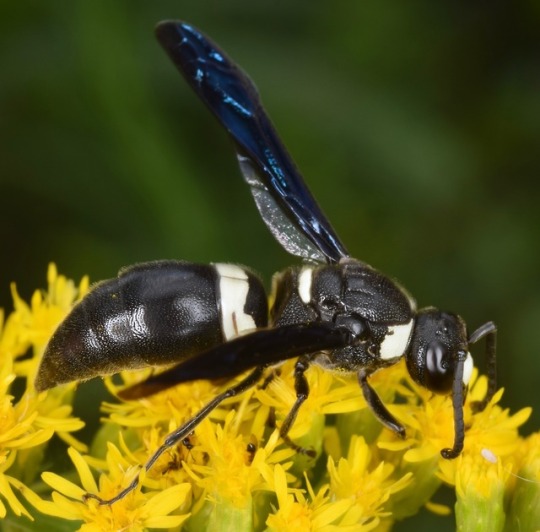

Monobia quadridens
Pseudodynerus quadrisectus
27 notes
·
View notes
Photo

the Asian comma (Polygonia c-aureum) and the potter wasp (Eumeninae)
コセンダングサに、キタテハとミカドトックリバチ(or ムモントックリバチ?)
#キタテハ#トックリバチ#昆虫#insect#owady#コセンダングサ#japan#蝶#motyl#butterfly#Polygonia c-aureum#potter wasp#Eumeninae#osa
33 notes
·
View notes